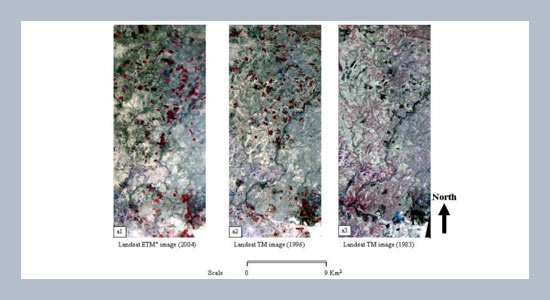Samih Bashir Al Rawashdeh * Survey and Geomatics Engineering Department, Engineering Faculty, Balqa Applied University, Al-SALT, Jordan
Download Citation:
|
Download PDF
This paper describes the status of irrigated areas in dry zones in the eastern parts of Jordan. These areas suffer from the salinity problem due to over pumping from the underground water and this recommends measures to achieve long term sustainability using advanced tools like remote sensing (RS). Employing these techniques is a very important issue these days as they aid planners and decision makers to make effective and correct decision and designs. They allow continuously monitoring any change and any intended plans to secure their success or rectification to meet the requirements. The endless abilities of RS allows doing the most tedious work in a flexible, fast and accurate manner, especially with the availability of more and more satellite images and the improvement of their quality with time. In this paper, we presnet a new methodology of change detection based on Normalized Difference Vegetation Index (NDVI) using three Landsat Thematic Mapper (TM) and Enhanced Thematic Mapper Plus (ETM+) satellite images for three different dates 1983, 1996 and 2004. These images are processed and analyzed using RS software. The results proved the efficiency of this method of change detection in detecting the deteriorated parcels due to the salinity caused by over pumping from ground water and the state of the land productivity over time.ABSTRACT
Keywords:
Remote sensing (RS); normalized difference vegetation index (NDVI); salinity; landuse and land cover; irrigated area; land productivity.
Share this article with your colleagues
REFERENCES
ARTICLE INFORMATION
Received:
2011-04-02
Revised:
2011-09-12
Accepted:
2011-09-15
Available Online:
2012-06-01
Rawashdeh, S.B., Al. 2012. Assessment of change detection method based on normalized vegetation index in environmental studies. International Journal of Applied Science and Engineering, 10, 89–97. https://doi.org/10.6703/IJASE.2012.10(2).89
Cite this article:






